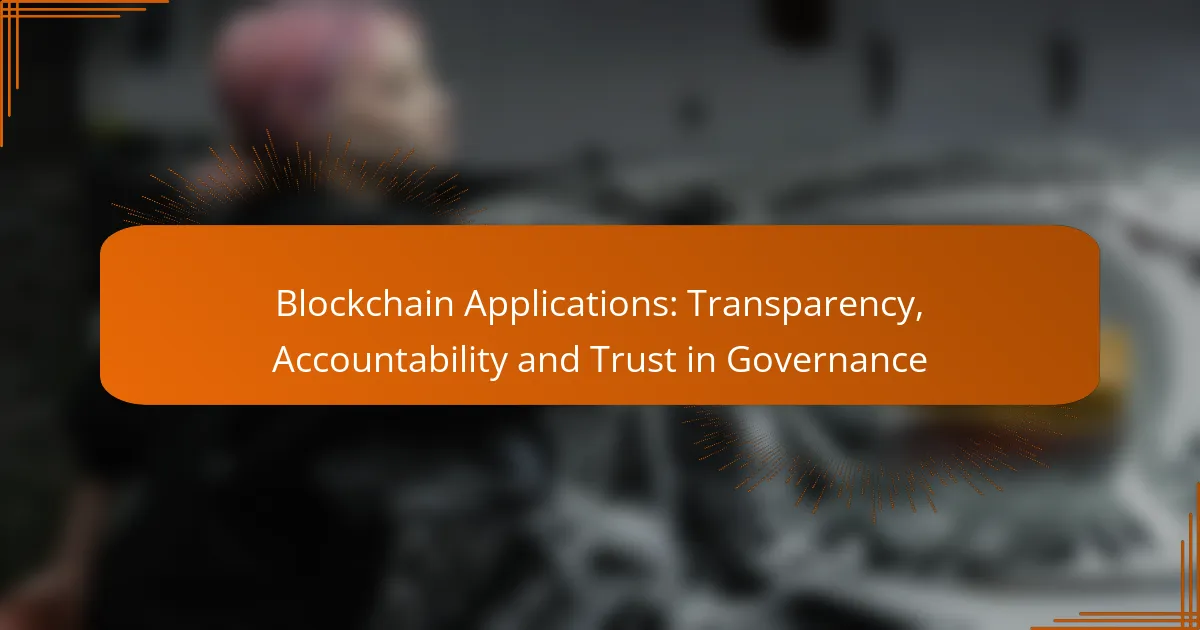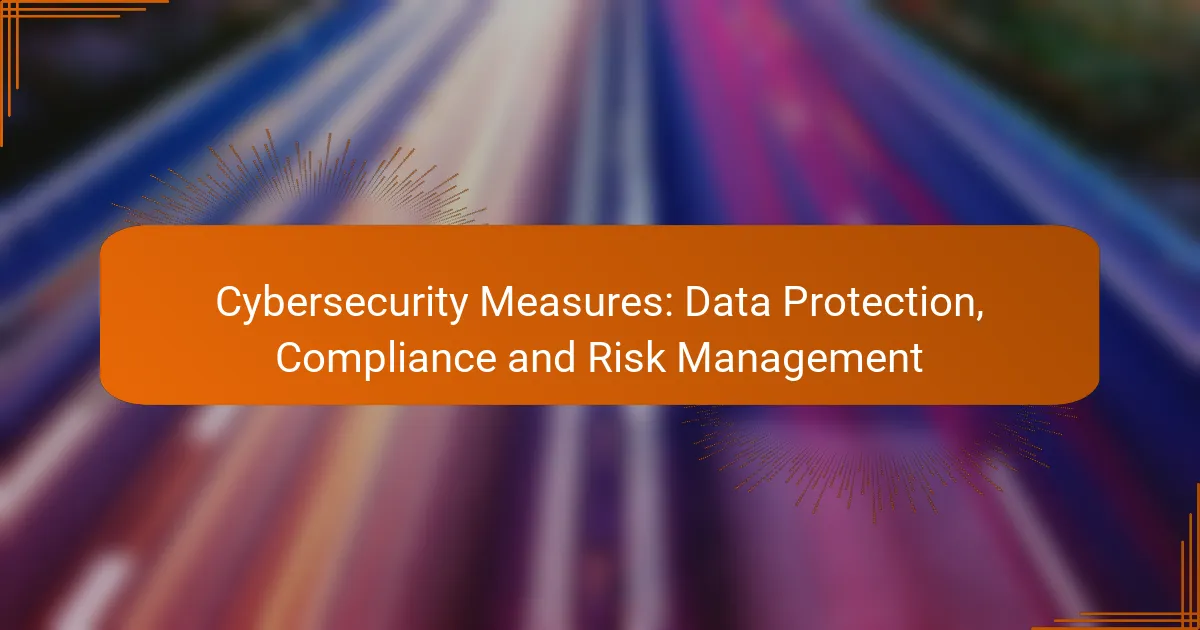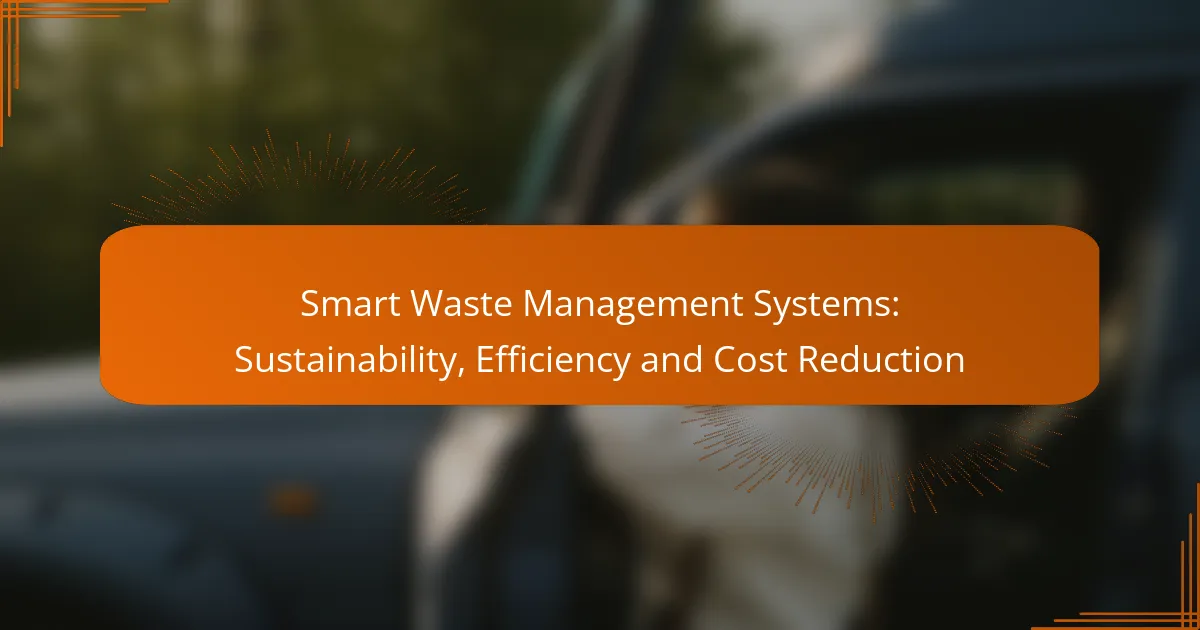Blockchain technology is revolutionizing governance by enhancing transparency, accountability, and trust. By providing a secure and tamper-proof system for recording transactions and decisions, it allows stakeholders to access verified information in real-time. This fosters an environment of trust among public institutions and ensures that all actions are traceable, significantly reducing the potential for fraud.
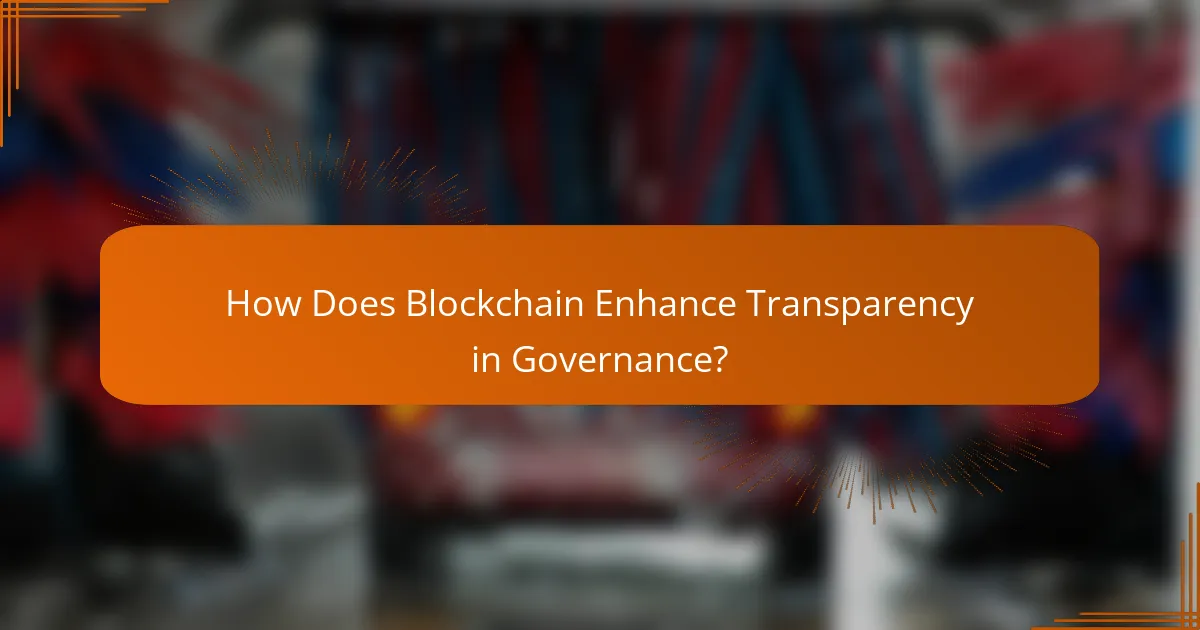
How Does Blockchain Enhance Transparency in Governance?
Blockchain enhances transparency in governance by providing a secure, tamper-proof system for recording transactions and decisions. This technology allows stakeholders to access verified information in real-time, fostering trust and accountability among public institutions.
Immutable records
Immutable records are a core feature of blockchain technology, ensuring that once data is entered, it cannot be altered or deleted. This characteristic is crucial for governance, as it prevents manipulation of records related to public spending, policy decisions, and electoral processes.
For example, when government contracts are recorded on a blockchain, any attempt to change the terms or amounts would be visible to all participants, thus deterring corruption and fraud. This transparency builds public confidence in governmental operations.
Real-time auditing
Real-time auditing is made possible through blockchain’s transparent ledger, allowing stakeholders to monitor transactions as they occur. This immediate access to data means that discrepancies can be identified and addressed quickly, reducing the risk of financial mismanagement.
Governments can implement smart contracts that automatically execute actions based on predefined conditions, further enhancing accountability. For instance, funds allocated for specific projects can only be released when certain milestones are verified on the blockchain.
Decentralized access
Decentralized access means that no single entity controls the blockchain, allowing multiple stakeholders to view and verify transactions. This democratization of information is vital for governance, as it empowers citizens and organizations to hold authorities accountable.
By providing access to blockchain data, citizens can track government spending and policy implementation, fostering a culture of openness. This approach can also mitigate the risks associated with centralized systems, where data breaches or corruption can occur more easily.
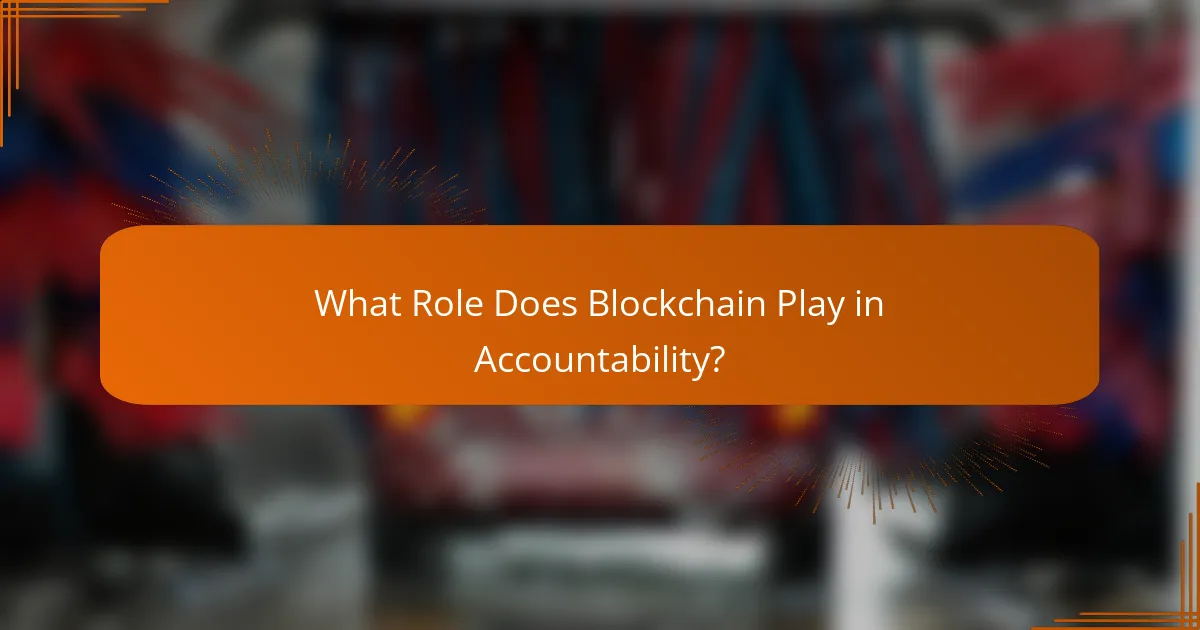
What Role Does Blockchain Play in Accountability?
Blockchain enhances accountability by providing a decentralized and immutable ledger that records all transactions transparently. This technology ensures that all actions can be traced back to their origin, fostering trust among stakeholders and reducing the potential for fraud.
Smart contracts
Smart contracts are self-executing agreements with the terms directly written into code. They automatically enforce and execute contractual obligations when predefined conditions are met, eliminating the need for intermediaries. This reduces the risk of manipulation and ensures that all parties adhere to the agreed terms.
For example, in a supply chain scenario, a smart contract could automatically release payment to a supplier once goods are delivered and verified, enhancing accountability in the transaction process.
Traceable transactions
Blockchain technology allows for traceable transactions, meaning every transaction is recorded and can be viewed by authorized parties. This transparency helps in tracking the flow of assets and verifying their authenticity, which is crucial for accountability in governance.
In practice, this means that stakeholders can audit transactions in real-time, ensuring compliance with regulations and reducing the likelihood of fraudulent activities. For instance, in public sector funding, blockchain can track the allocation and use of funds, making it easier to hold officials accountable.
Stakeholder verification
Stakeholder verification involves using blockchain to confirm the identities and roles of individuals involved in a transaction. This process enhances accountability by ensuring that only authorized parties can participate in governance activities.
By implementing identity verification protocols on the blockchain, organizations can prevent unauthorized access and ensure that all actions are traceable to verified individuals. This is particularly important in elections or public resource management, where trust and integrity are paramount.

How Can Blockchain Foster Trust in Governance?
Blockchain can significantly enhance trust in governance by providing a transparent, immutable record of transactions and decisions. This technology empowers stakeholders by ensuring accountability and fostering public confidence in governmental processes.
Public participation
Blockchain facilitates public participation by enabling citizens to engage directly in governance processes. For instance, using blockchain-based voting systems can allow for secure and transparent elections, where every vote is recorded and verifiable by anyone.
Moreover, decentralized platforms can be used for public consultations, where citizens can contribute ideas and feedback on policies. This direct involvement helps to create a sense of ownership and responsibility among the populace.
Reduced corruption
By providing a transparent ledger, blockchain can significantly reduce opportunities for corruption in governance. Transactions recorded on a blockchain are immutable, making it difficult for officials to alter or manipulate records for personal gain.
For example, public funds can be tracked on a blockchain, allowing citizens to see how money is allocated and spent. This visibility discourages corrupt practices and promotes ethical behavior among public officials.
Enhanced data integrity
Blockchain enhances data integrity by ensuring that information is securely stored and cannot be tampered with. Each transaction is cryptographically linked to the previous one, creating a chain of trust that is difficult to break.
Governments can utilize blockchain to maintain accurate records of land ownership, legal documents, and public services. This not only protects against fraud but also ensures that citizens have access to reliable information when needed.
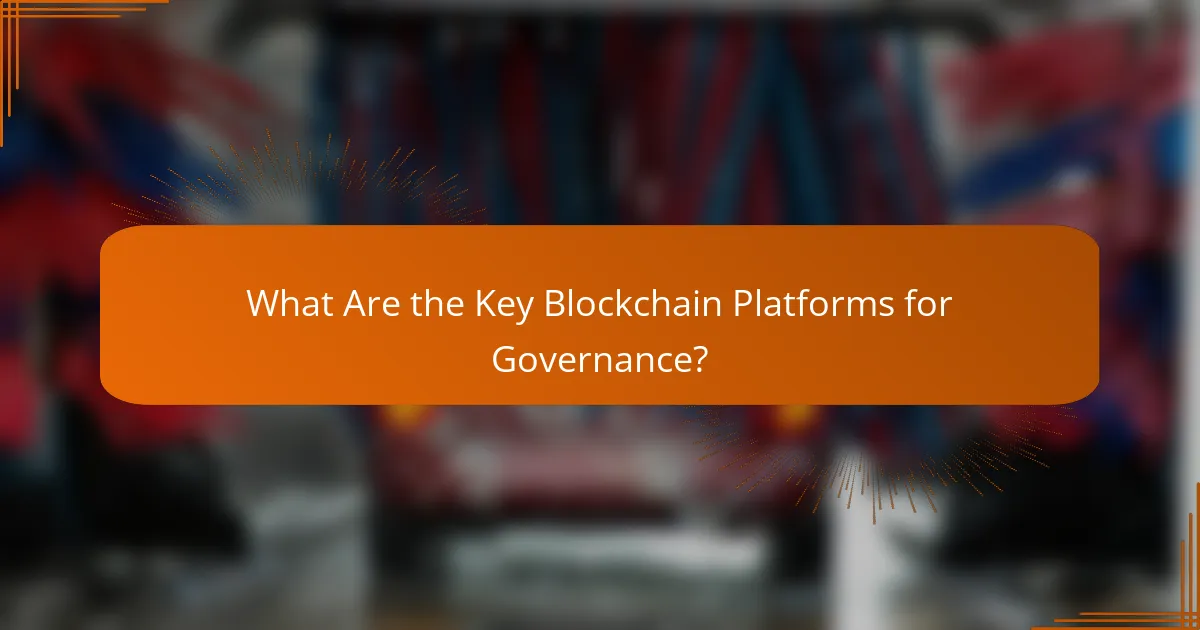
What Are the Key Blockchain Platforms for Governance?
Key blockchain platforms for governance include Ethereum, Hyperledger Fabric, and Tezos, each offering unique features that enhance transparency, accountability, and trust. These platforms facilitate decentralized decision-making and can be tailored to meet specific governance needs.
Ethereum
Ethereum is a leading blockchain platform known for its smart contract functionality, which allows for automated and transparent governance processes. It supports decentralized applications (dApps) that can be used for voting, fund management, and policy enforcement.
When using Ethereum for governance, consider the gas fees associated with transactions, which can fluctuate significantly. For small to medium-sized organizations, these costs can be manageable, but larger entities may need to account for higher expenses during peak usage times.
Hyperledger Fabric
Hyperledger Fabric is a permissioned blockchain framework designed for enterprise solutions, making it suitable for organizations that require privacy and control over their governance processes. It allows for the creation of private channels, where only selected participants can access specific data.
This platform is ideal for industries such as finance and healthcare, where compliance and confidentiality are critical. Organizations should evaluate their governance needs to determine the appropriate configuration of nodes and channels to optimize performance and security.
Tezos
Tezos is a self-amending blockchain that emphasizes formal verification, which ensures that smart contracts operate as intended. This feature is particularly beneficial for governance applications that require high reliability and security in their decision-making processes.
Tezos also supports on-chain governance, allowing stakeholders to propose and vote on protocol upgrades directly. This can foster a more engaged community, but organizations should ensure that their voting mechanisms are well-structured to avoid potential pitfalls such as low participation rates.
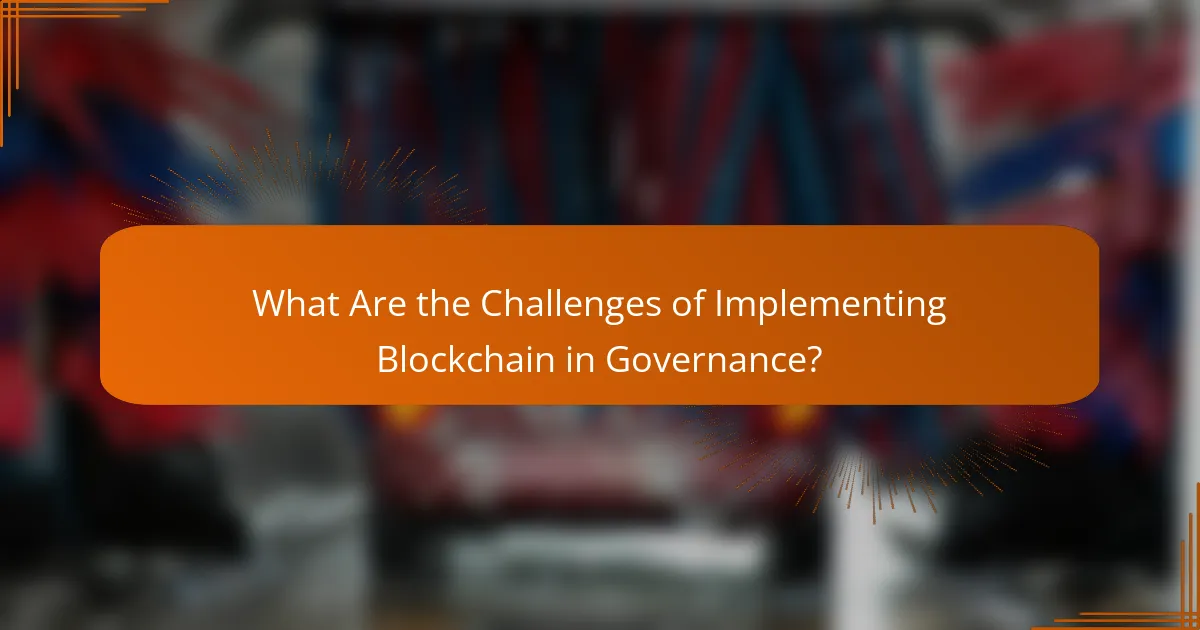
What Are the Challenges of Implementing Blockchain in Governance?
Implementing blockchain in governance faces several significant challenges, including scalability, regulatory hurdles, and public understanding. Each of these factors can hinder the effective integration of blockchain technology into governmental processes.
Scalability issues
Scalability is a major challenge for blockchain in governance, as many blockchain networks struggle to handle a high volume of transactions efficiently. For instance, while some networks can process only a few transactions per second, others may reach hundreds, but still fall short of the demands of large-scale government applications.
To address scalability, governments may consider adopting layer-2 solutions or hybrid models that combine on-chain and off-chain processing. These approaches can help manage transaction loads while maintaining the integrity and security of the blockchain.
Regulatory hurdles
Regulatory hurdles are a significant barrier to implementing blockchain in governance. Governments must navigate existing legal frameworks, which may not accommodate the decentralized nature of blockchain technology. This can lead to uncertainty and reluctance to adopt blockchain solutions.
To overcome these hurdles, collaboration between policymakers and blockchain experts is essential. Developing clear guidelines and regulations that address the unique aspects of blockchain can facilitate smoother integration into governance structures.
Public understanding
Public understanding of blockchain technology is often limited, which can impede its acceptance and implementation in governance. Many citizens may not grasp how blockchain works or its potential benefits, leading to skepticism and resistance.
To improve public understanding, governments should invest in educational initiatives that explain blockchain’s functionality and advantages. Engaging with communities through workshops, seminars, and informational campaigns can help demystify the technology and build trust among citizens.
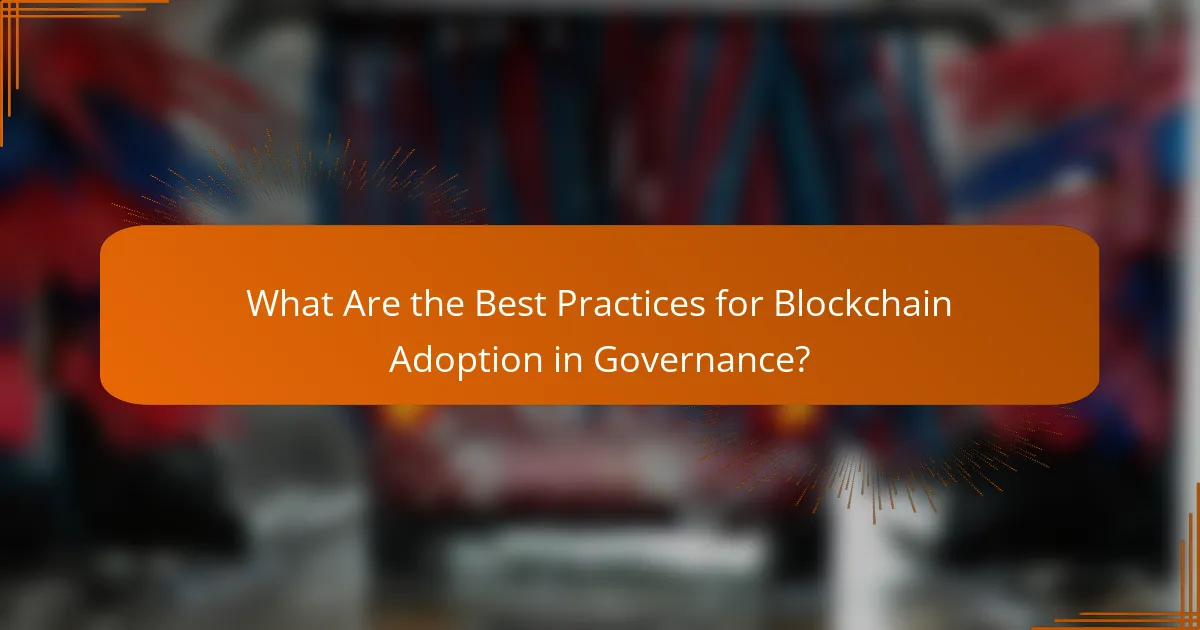
What Are the Best Practices for Blockchain Adoption in Governance?
Effective blockchain adoption in governance involves engaging stakeholders, initiating pilot projects, and adhering to interoperability standards. These practices ensure that the technology is implemented successfully, fostering transparency and accountability.
Stakeholder engagement
Engaging stakeholders is crucial for the successful adoption of blockchain in governance. This includes involving government officials, citizens, and industry experts in discussions about the technology’s benefits and challenges. Regular workshops and feedback sessions can help align expectations and build trust.
Consider forming a stakeholder advisory group to guide the implementation process. This group can provide insights into community needs and preferences, ensuring that the blockchain solution is user-friendly and meets regulatory requirements.
Pilot projects
Launching pilot projects allows governments to test blockchain applications on a smaller scale before full implementation. These projects can help identify potential issues and gather data on performance and user experience. Start with low-risk areas, such as land registries or public records, to minimize disruption.
Successful pilots should be evaluated based on clear metrics, such as transaction speed, cost savings, and user satisfaction. Use the findings to refine the approach and scale the solution gradually, ensuring that all stakeholders are informed throughout the process.
Interoperability standards
Establishing interoperability standards is essential for ensuring that different blockchain systems can communicate effectively. This promotes collaboration between various government departments and enhances data sharing. Consider adopting widely recognized standards, such as those from the World Wide Web Consortium (W3C) or the International Organization for Standardization (ISO).
Governments should also engage with technology providers to develop solutions that are compatible with existing systems. This reduces the risk of siloed information and enhances the overall efficiency of governance processes.
